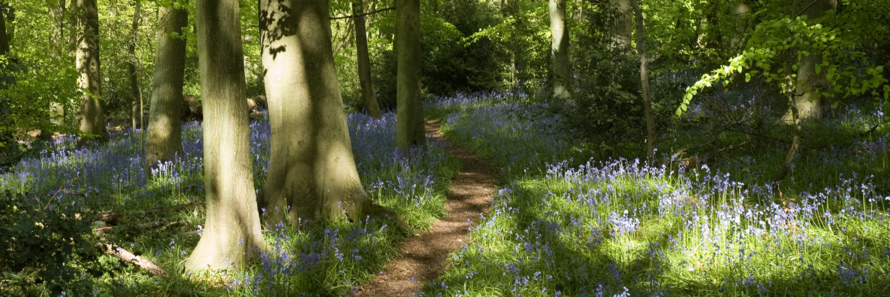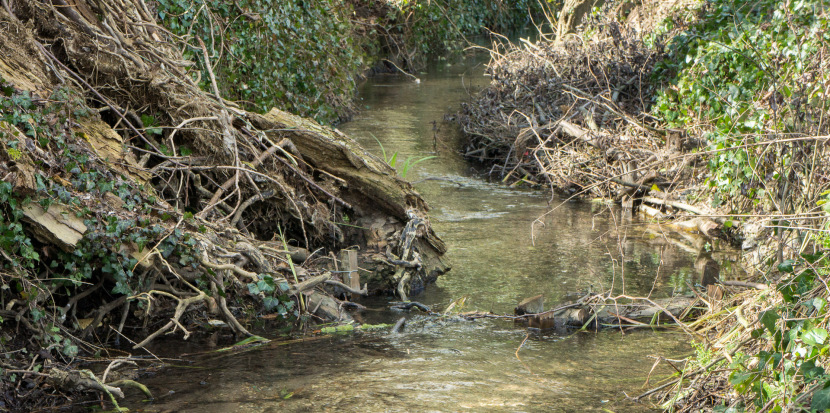Watlington Watercourses Project
In 2013 we began a project to investigate the watercourses of Watlington. We are studying the sources and routes of the many water bodies in the parish in a multi-disciplinary study that will include local history, geology and hydrogeology, as well as the flora and fauna. We plan to publish a full report of our findings and data at a future date.
We are also undertaking practical work to improve the water quality and support biodiversity and wildlife as well as raising public awareness of these precious natural resources and the threats they face.
Watlington is built on top of chalk-fed springs that combine to form the Chalgrove Brook, which exits the town by the roundabout on the Cuxham Road. Also known locally in Watlington and Cuxham as the Marlbrook, the Chalgrove Brook links to the River Thame at Chiselhampton and in turn to the River Thames at Dorchester.
Watlington Amphibian Survey 2020
Last year, WEG's Watercourses Project launched an amphibian survey within the parish and are repeating the process this year.
The Common Frog and Common Toad are not as plentiful as they once were. We want to develop a better understanding of our amphibian populations and how they could be enhanced in future. Last year’s survey highlighted to us the importance of the small garden ponds around the town for frogs to breed in. There were very few reports of toads in the town, but there appear to be plenty up in the Chiltern Hills.
So, please let us know if you see any frog or toad spawn in ponds, streams or even puddles this spring. We would also like to hear about ponds where they do not spawn and any sightings of frogs or toads.
You can download a survey form below.
Microsoft Word document [97.4 KB]
Why are Watlington's streams so special?
As a spring-fed chalk stream, the upper section of the Chalgrove Brook is a globally rare habitat, found only in southern England and parts of France.
But, like many other chalk streams, it is highly vulnerable to the impacts from our activities, both accidental and deliberate. Despite hundreds of years of being straightened, buried, built over, narrowed/widened and used to take all our surface water drainage the Marlbrook is still supporting wildlife, but is at risk and needs our protection.
How clean is the Brook?
The water in the brook is normally clean enough to support Brown Trout and various pollution-intolerant species of aquatic insect like mayfly and water shrimp. This is because it is spring fed by water that has fallen as rain on the Chilterns, and percolates through the chalk over a long period. However, when it rains, runoff from the roads enters from drains, and the water quality is reduced. At times toxic substances get into the brook by accident or through carelessness.
What lives in the Brook?
The Marlbrook in Watlington is home to brown trout and sticklebacks; a range of aquatic invertebrate including freshwater shrimps, mayflies, caddis flies, swan mussels and water snails; and many types of aquatic plants. It is also used by birds like the grey wagtail and heron, and mammals.
What can be done about it?
We can all take care how we dispose of any of our waste and be vigilant. As a reminder, WEG, with the support of the Environment Agency and the Parish Council is attaching ‘yellow fish’ plaques beside road drains. This is a Government-backed initiative to remind people ‘only rain down the drain’.
Why do the ponds empty and the streams dry up most years, but sometimes flood?
Spring fed streams depend on the height of groundwater and this in turn is dependent on how much rain falls on the hills. There is a lag of some months between rain falling on the hills and it permeating to the springs. This is why the Willow and Horse Ponds dry out in some years then refill. Watlington floods occasionally when either the water table is exceptionally high as a result of sustained wet weather or when there is a blockage in one of the culverts carrying a brook underground. During very heavy rainfall road drainage sometimes cannot cope.
WEG has been monitoring groundwater levels in wells, rainfall and the level of the brook in order to better understand how the system works and to help predict when flooding from groundwater might occur.
Where does our tap water come from?
Most of Watlington’s tap water comes from a Thames Water borehole just off Spring Lane drilled into a water table that is about 75m below the ground. It is chlorinated and pumped up to storage reservoirs in the Chiltern Hills.
Where does our sewage go?
Our sewage is collected in a network of sewers across Watlington that leave the town by the roundabout on the Cuxham Road and flow under gravity to the Watlington Sewage Treatment Works near Cuxham. The treated effluent discharges into the Pyrton Brook which joins the Chalgrove Brook just this side of Cuxham. It is possible for household drains to be accidentally connected to the road drainage and WEG looks out for evidence of such misconnections.
Where does the water go when I wash my car or pour something down a road drain?
Watlington’s network of surface water drains discharge into the brook, which consequently rises during heavy rain. Anything that washes from the pavements, roads and buildings – including waste from washing cars and anything else we pour down road drains – ends up in the Brook.
Have there been pollution incidents?
Yes, most recently in June 2017, when all the brown trout in the brook through Watlington were killed by a toxic pollutant that appears to have entered via one of the surface water drains connecting along the Cuxham Road. The exact substance is unknown but the most likely cause was accidental or deliberate disposal of a chemical down a drain.
What can I do to help?
The biggest contribution anyone can make to the protection of Watlington’s watercourses is to take care over what is poured into the surface drains and to avoid flushing anything into the sewers that could cause blockages.
If you see anything that causes you concern you can report it using the Environment Agency’s Incident Hotline 0800 807060.
There are plenty of activities undertaken by the Watlington Environment Group that you can join in with.
If you are interested in participating in the project, or have information, photographs, maps or reports that might be helpful to us, please contact Mike Chadwick on 01494 483663.
Contact us: info@watlington-environment-group.org.uk
















